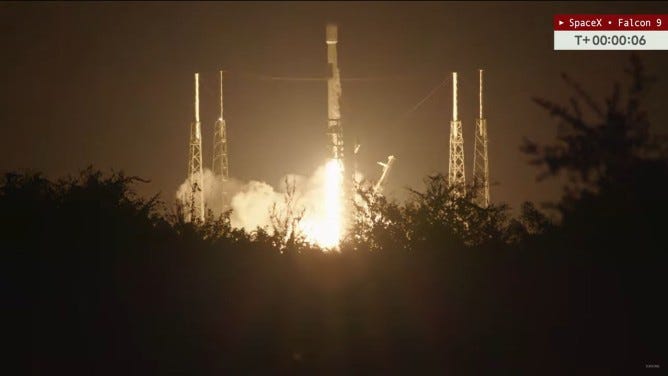The burst of energy was likely triggered when an unusually large star wandered too close to the black hole.
Published On 4 Nov 2025
Scientists have documented the most energetic flare ever observed emanating from a supermassive black hole, a cataclysmic event that briefly shone with the light of 10 trillion suns.
The new findings were published on Tuesday in the journal Nature Astronomy, with astronomer Matthew Graham of the California Institute of Technology (Caltech) leading the study.
Recommended Stories
list of 3 items- list 1 of 3Global Warning: Our future in a warmer world
- list 2 of 3AI now sounds more like us – should we be concerned?
- list 3 of 3Nobel Prize in Physics awarded to trio for quantum mechanics discoveries
The phenomenal burst of energy was likely triggered when an unusually large star wandered too close to the black hole and was violently shredded and swallowed.
“However it happened, the star wandered close enough to the supermassive black hole that it was ‘spaghettified’ – that is, stretched out to become long and thin, due to the gravity of the supermassive black hole strengthening as you get very close to it. That material then spiralled around the supermassive black hole as it fell in,” said astronomer and study co-author KE Saavik Ford.
The supermassive black hole was unleashed by a black hole roughly 300 million times the mass of the sun residing inside a faraway galaxy, about 11 billion light years from Earth. A light year is the distance light travels in a year, 5.9 trillion miles (9.5 trillion km).
The star, estimated to be between 30 and 200 times the mass of the sun, was turned into a stream of gas that heated up and shined intensely as it spiralled into oblivion.
Almost every large galaxy, including our Milky Way, has a supermassive black hole at its centre. But scientists still aren’t sure how they form.
First spotted in 2018 by the Palomar Observatory, operated by the Caltech, the flare took about three months to reach its peak brightness, becoming roughly 30 times more luminous than any previously recorded event of its kind. It is still ongoing, but diminishing in luminosity, with the entire process expected to take about 11 years to complete.
Because of how far away the black hole is located, observing the flash gives scientists a rare glimpse into the universe’s early epoch. Studying these immense, distant black holes helps researchers better understand how they form, how they influence their local stellar neighbourhoods, and the fundamental interactions that shaped the cosmos we know today.

 1 month ago
15
1 month ago
15












































